COVID-19 and its genomic variants: Molecular pathogenesis and therapeutic interventions
- PMID: 36381644
- PMCID: PMC9650701
- DOI: 10.17179/excli2022-5315
COVID-19 and its genomic variants: Molecular pathogenesis and therapeutic interventions
Abstract
Coronavirus disease-19 (COVID-19), caused by a β-coronavirus and its genomic variants, is associated with substantial morbidities and mortalities globally. The COVID-19 virus and its genomic variants enter host cells upon binding to the angiotensin converting enzyme 2 receptors that are expressed in a variety of tissues, but predominantly in the lungs, heart, and blood vessels. Patients afflicted with COVID-19 may be asymptomatic or present with critical symptoms possibly due to diverse lifestyles, immune responses, aging, and underlying medical conditions. Geriatric populations, especially men in comparison to women, with immunocompromised conditions, are most vulnerable to severe COVID-19 associated infections, complications, and mortalities. Notably, whereas immunomodulation, involving nutritional consumption, is essential to protecting an individual from COVID-19, immunosuppression is detrimental to a person with this aggressive disease. As such, immune health is inversely correlated to COVID-19 severity and resulting consequences. Advances in genomic and proteomic technologies have helped us to understand the molecular events underlying symptomatology, transmission and, pathogenesis of COVID-19 and its genomic variants. Accordingly, there has been development of a variety of therapeutic interventions, ranging from mask wearing to vaccination to medication. This review summarizes the current understanding of molecular pathogenesis of COVID-19, effects of comorbidities on COVID-19, and prospective therapeutic strategies for the prevention and treatment of this contagious disease.
Keywords: COVID-19 and its variants; healthy immunity; immunocompromised conditions; lifestyle; pathogenesis; therapeutics.
Copyright © 2022 Manna et al.
Figures
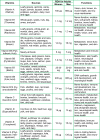
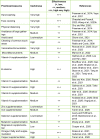
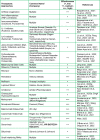
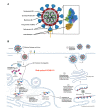

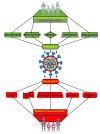

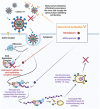
Similar articles
-
Healthy Immunity on Preventive Medicine for Combating COVID-19.Nutrients. 2022 Feb 27;14(5):1004. doi: 10.3390/nu14051004. Nutrients. 2022. PMID: 35267980 Free PMC article. Review.
-
The Science Underlying COVID-19: Implications for the Cardiovascular System.Circulation. 2020 Jul 7;142(1):68-78. doi: 10.1161/CIRCULATIONAHA.120.047549. Epub 2020 Apr 15. Circulation. 2020. PMID: 32293910
-
"I'm smiling back at you": Exploring the impact of mask wearing on communication in healthcare.Int J Lang Commun Disord. 2021 Jan;56(1):205-214. doi: 10.1111/1460-6984.12578. Epub 2020 Oct 10. Int J Lang Commun Disord. 2021. PMID: 33038046 Free PMC article. Review.
-
Relevance between COVID-19 and host genetics of immune response.Saudi J Biol Sci. 2021 Nov;28(11):6645-6652. doi: 10.1016/j.sjbs.2021.07.037. Epub 2021 Jul 17. Saudi J Biol Sci. 2021. PMID: 34305429 Free PMC article. Review.
-
Summary of Guidance for Minimizing the Impact of COVID-19 on Individual Persons, Communities, and Health Care Systems - United States, August 2022.MMWR Morb Mortal Wkly Rep. 2022 Aug 19;71(33):1057-1064. doi: 10.15585/mmwr.mm7133e1. MMWR Morb Mortal Wkly Rep. 2022. PMID: 35980866 Free PMC article.
Cited by
-
SKI-1/S1P Facilitates SARS-CoV-2 Spike Induced Cell-to-Cell Fusion via Activation of SREBP-2 and Metalloproteases, Whereas PCSK9 Enhances the Degradation of ACE2.Viruses. 2023 Jan 27;15(2):360. doi: 10.3390/v15020360. Viruses. 2023. PMID: 36851576 Free PMC article.
References
Publication types
LinkOut - more resources
Full Text Sources
Research Materials
